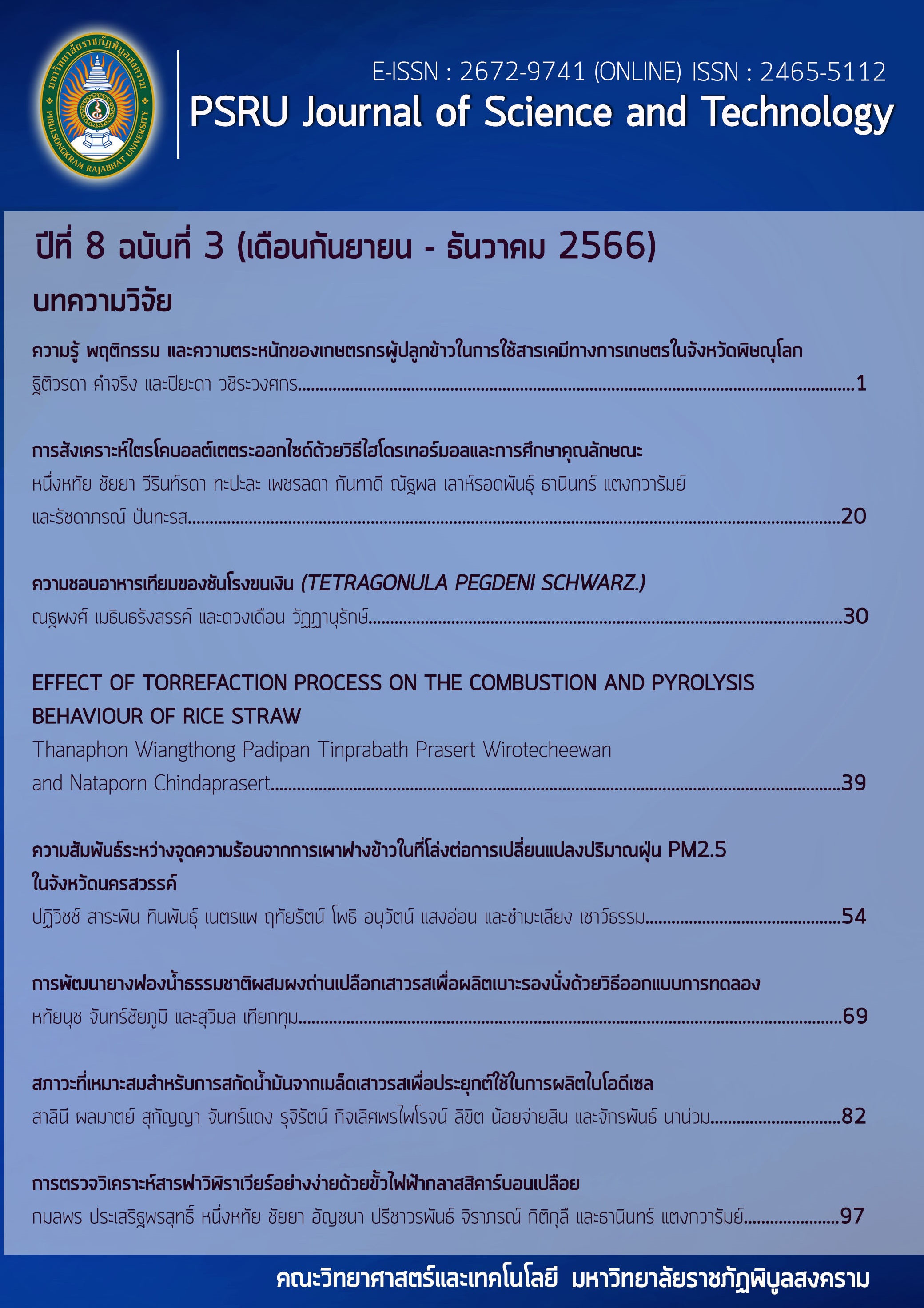ARTIFICIAL DIETS PREFERENCE OF STINGLESS BEE, TETRAGONULA PEGDENI SCHWARZ
Keywords:
Preference, Artificial diet, Stingless beeAbstract
The objective of this research was to study the artificial diets preference of stingless bee (Tetragonula pagdeni Schwarz). The stingless bee nest was placed in the center of
the experimental house and surrounded by artificial diets in order to the stingless bee to choose preference of artificial diets. All 7 artificial diet formula were as follows: 1 water (control),
2 glucose (40 ml), 3 fructose (40 ml), 4 glucose (20 ml) + fructose (20 ml), 5 glucose (35 ml)+ soybean (20 g) + pollen (5 g), 6 fructose (35 ml) + soybean (20 g) + pollen (5 g) and 7 glucose
(32 ml) + fructose (32 ml) + soybean (20 g) + pollen (5 g). The results found that the artificial diet
7 (glucose + fructose + soybean + pollen) had the highest of number of stingless bee and was significantly effective (P<0.05) when compared with the control. The number of stingless bees was 25.41 ± 0.90 adults/hour. Therefore, the use of artificial diet can replace natural diet during the rainy season when there is not enough food. Farmers can culture the stingless bee in order to obtain quality honey that will continue to create careers and income
References
โกวิทย์ พงษ์พันธ์เดชา. (2563). พึ่งพาผึ้ง. สืบค้นเมื่อ 10 มกราคม 2566, จาก https://readthecloud.co.
จิราพร กุลสาริน, นินาท บัววังโป่ง, บาจรีย์ ฉัตรทอง, วสิริญา คัมภิโร, กนกวรรณ คำยอดใจ, และสมฤทัย ใจเย็น. (2561). ความหลากชนิดของชันโรงและการนำไปใช้. เชียงใหม่: คณะเกษตรศาสตร์ มหาวิทยาลัยเชียงใหม่.
สมนึก บุญเกิด, และอรุณรัตน์ คมขำ. (2553). ศึกษาอนุกรมวิธานชันโรงในภาคใต้ของประเทศไทย. วารสารวิจัยรามคำแหง, 12(2), 1-24.
อัญชลี สวาสดิ์ธรรม. (2556). มหัศจรรย์ชันโรง. ปทุมธานี: ทริปเพิ้ล กรุ๊ป.
Queiroz, A.C.M., Leão, K.L., Contrera, F.A.L., Teixeira, J.C., & Menezes C. (2019). Stingless bees fed on fermented soybean-extract-based diet had reduced lifespan than pollen-fed workers. Sociobiology, 66(1), 107-112.
Rasmussen, C., & Cameron, S.A. (2010). Global stingless bee phylogeny supports ancient divergence, vicariance, and long distant dispersal. Biological Journal of the Linnean Society, 99, 206-232.
Rebelo, K.S., Ferreira, A.G., & Carvalho-Zilse, G.A. (2016). Physicochemical characteristics of pollen collected by Amazonian stingless bees. Ciência Rural, 46, 927-932.
Souza-Junior, J.B.F., Queiroz, J.P.A.F., & Linhares, C.M.S. (2019). Influence of the thermal environment on the stingless bee foraging activity: a mini-review. Journal of Animal Behaviour and Biometeorology, 7, 176-178.
Vollet-Neto, A., Maia-Silva, C., Menezes, C., & Imperatriz-Fonseca, V.L. (2016). Newly emerged workers of the stingless bee, Scaptotrigona aff. depilis prefer stored pollen to fresh pollen. Apidologie, 9(1), 33-40.
Downloads
Published
Versions
- 2024-05-29 (2)
- 2023-12-20 (1)
How to Cite
Issue
Section
License
Copyright (c) 2023 PSRU Journal of Science and Technology

This work is licensed under a Creative Commons Attribution-NonCommercial-NoDerivatives 4.0 International License.
กองบรรณาธิการขอสงวนสิทธิ์ในการปรับปรุงแก้ไขตัวอักษรและคำสะกดต่างๆ ที่ไม่ถูกต้อง และต้นฉบับที่ได้รับการตีพิมพ์ในวารสาร PSRU Journal of Science and Technology ถือเป็นกรรมสิทธิ์ของคณะวิทยาศาสตร์และเทคโนโลยี มหาวิทยาลัยราชภัฏพิบูลสงคราม และ
ผลการพิจารณาคัดเลือกบทความตีพิมพ์ในวารสารให้ถือมติของกองบรรณาธิการเป็นที่สิ้นสุด







